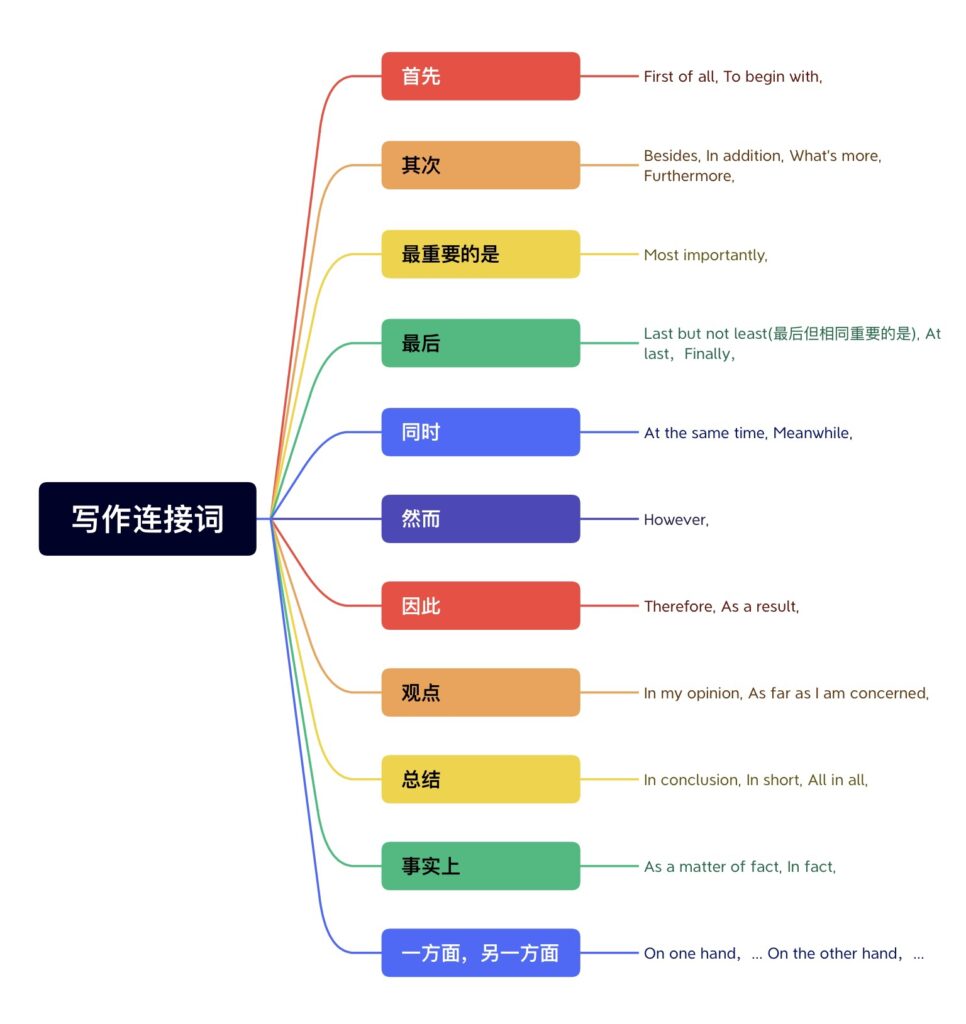连接词
(1) And: 连接两个相似的事物或句子,表示并列。
例句:I went to the store and bought some fruit.
(2) But: 连接两个相反的事物或句子,表示转折。
例句:He is smart but sometimes lazy.
(3) Or: 连接两个相似的事物或句子,表示选择。
例句:Do you want to go to the park or the beach?
(4) So: 连接原因和结果,表示因果关系。
例句:I studied hard, so I passed the exam.
(5) Therefore: 表示因果关系,引导结论。
例句:The weather is bad, therefore we have to cancel the picnic.
(6) However: 表示转折,引出与前面相反的内容。
例句:She is very intelligent. However, she lacks confidence.
过渡词
(1) Firstly/First of all: 表示首先。
例句:Firstly, we need to understand the basics of the topic.
(2) Secondly: 表示其次。
例句:Secondly, we need to consider the possible outcomes.
(3) Furthermore: 表示进一步地。
例句:Furthermore, we need to take into account the potential risks.
(4) Moreover: 表示另外,此外。
例句:Moreover, we need to think about the long-term effects.
(5) In addition: 表示补充信息。
例句:In addition, we need to discuss the financial aspects.
常用句型
(1) It is well known that…: 表示一个广为人知的事实。
例句:It is well known that smoking is bad for our health.
(2) There is no doubt that…: 表示毫无疑问的事实。
例句:There is no doubt that technology has changed our lives.
(3) In conclusion: 表示总结论。
例句:In conclusion, we can see that the advantages outweigh the disadvantages.
(4) As a result: 表示结果。
例句:The company cut costs, as a result, many employees lost their jobs.
(5) On the one hand, on the other hand: 表示对比或两种不同观点。
例句:On the one hand, the new policy benefits the environment. On the other hand, it may harm the economy.
Mindmap解析
